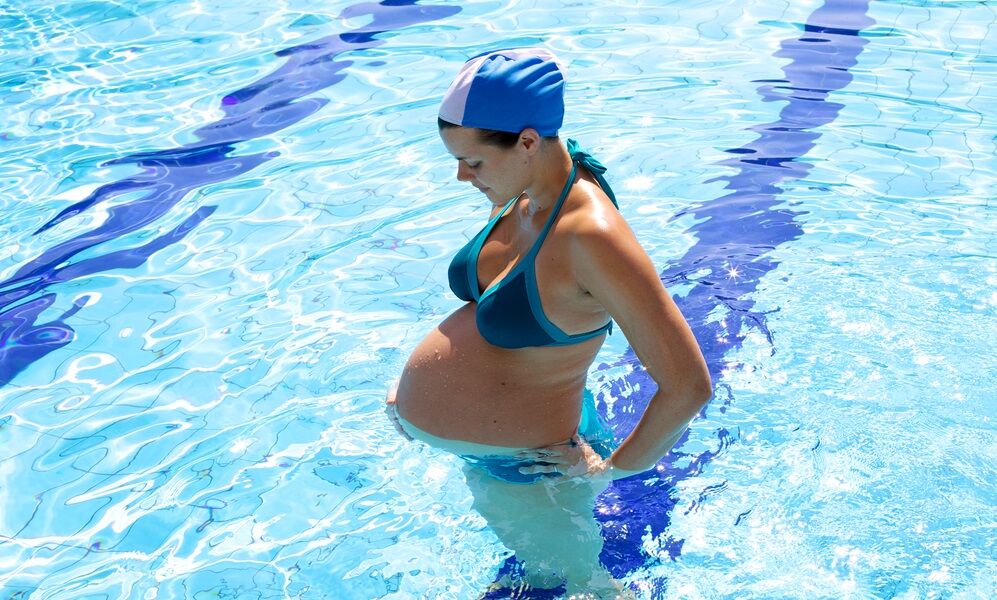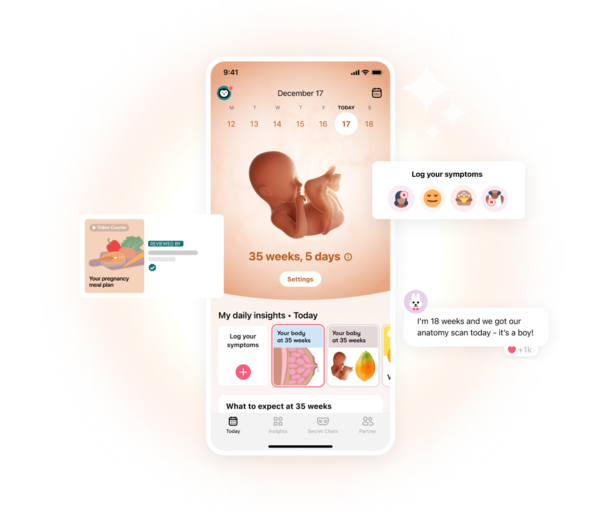Roughly 50 percent of expectant mothers report having swollen feet, especially towards the end of their pregnancy. Swelling of the face, fingers, and lower back are also common. Here, Flo takes a closer look at why it happens and what you should do.
-
Tracking cycle
-
Getting pregnant
-
Pregnancy
-
Help Center
-
Flo for Partners
-
Anonymous Mode
-
Flo app reviews
-
Flo Premium New
-
Secret Chats New
-
Symptom Checker New
-
Your cycle
-
Health 360°
-
Getting pregnant
-
Pregnancy
-
Being a mom
-
LGBTQ+
-
Quizzes
-
Ovulation calculator
-
hCG calculator
-
Pregnancy test calculator
-
Menstrual cycle calculator
-
Period calculator
-
Implantation calculator
-
Pregnancy weeks to months calculator
-
Pregnancy due date calculator
-
IVF and FET due date calculator
-
Due date calculator by ultrasound
-
Medical Affairs
-
Science & Research
-
Pass It On Project New
-
Privacy Portal
-
Press Center
-
Flo Accuracy
-
Careers
-
Contact Us
How to Reduce Swelling During Pregnancy: 12 Proven Tips


Every piece of content at Flo Health adheres to the highest editorial standards for language, style, and medical accuracy. To learn what we do to deliver the best health and lifestyle insights to you, check out our content review principles.
When does swelling occur during pregnancy?
Pregnancy swelling could happen at any time, but it most often presents itself during month 5, and gradually increases as you enter the third trimester.
Other contributing factors include:
- Hot weather, especially when you’re being physically active
- Fatigue and standing for extended periods of time
- A high-sodium diet
What causes swelling during pregnancy?
During gestation, your body produces 50 percent more blood and other fluids to meet the demands of your growing baby. Their production aids in both fetal development and delivery. These fluids soften tissues in surrounding areas to accommodate your baby as they increase in size while priming your joints and pelvic area for labor.
Unfortunately, this process leads to swelling, or edema, which can affect your face, hands, ankles, legs, and feet. Hormonal changes and impaired blood flow (due to increased pressure on the veins) are also responsible for pregnancy swelling.
To alleviate its effects, try to stay off your feet as much as possible, particularly in the evening. Gravity aggravates your symptoms by causing excess fluids to collect in your ankles, legs, and feet.
How to reduce swelling during pregnancy
Here are a dozen foolproof tips for reducing swelling during pregnancy:
1. Avoid standing for extended periods
Whenever possible, sit and relax (or even lay down), with your legs elevated. Occasionally rotate each foot at the ankle to gently flex and stretch your calf muscles.
2. Wear compression stockings

Buy supportive stockings or tights to wear during the day. These products are specially designed to maintain healthy blood flow in your legs.
3. Engage in daily physical activity
Take a walk, ride a stationary bike, or go swimming regularly in order to stay physically active. Further reduce pregnancy swelling by incorporating the exercises below into your routine:
- Stretch and bend each foot upwards, then downwards 30 times.
- Rotate your foot in a circular motion, first in one direction, then in the other direction. Repeat eight times.
These may be done while standing or sitting, and will boost circulation and prevent muscle cramps.
4. Sleep on your left side
Try sleeping on your left side each night, with both legs slightly elevated. This position releases the pressure on your inferior vena cava, which returns deoxygenated blood from the legs to the heart.
5. Walk or stand in a swimming pool
Take a quiz
Find out what you can do with our Health Assistant

Although little research exists on the benefits of water pressure on swollen ankles, it’s believed that walking or standing in the pool compresses leg tissues. It should provide at least temporary relief from pregnancy swelling.
6. Stay hydrated
Ironically, drinking lots of water serves to flush excess fluids out of your body and decreases retention. The Institute of Medicine recommends consuming roughly 10 cups (2.4 liters) of fluids per day when you’re pregnant.
7. Do not wear tight clothing
Clothing that fits snugly around your calves and ankles will restrict the flow of blood through your legs and feet. Steer clear of socks, tights, or stockings with elastic bands, and ditch the high heels in favor of a pair of comfy, supportive sneakers.
8. Minimize outdoor time in the summer
When the weather’s hot, sticky, and humid, remain indoors to avoid a pregnancy swelling flare-up.
9. Put a cold compress on swollen areas
An ice pack or cold compress on the affected area can lower your temperature while reducing pain and swelling.
10. Eat a well-balanced diet
The excessive consumption of sodium triggers water retention and swelling. Lower your sodium intake by cutting out processed and packaged foods, which are also loaded with sugar and saturated fat.
11. Quit smoking
In addition to its harmful effects on the health of your baby, smoking has been linked to bone loss, joint deformity, and painful swelling.
12. Try reflexology and foot massage
Certain research studies have found that reflexology and foot massage offer an effective remedy for pregnancy swelling. The practice involves putting pressure on specific areas of the ears, hands, and feet.
When to contact a doctor for pregnancy swelling
Mild ankle and foot swelling during pregnancy is to be expected. However, sudden and painful swelling, especially in just one leg, may be a sign of deep venous thrombosis or a blood clot.
At times, sudden swelling is also indicative of preeclampsia. It’s a potentially serious condition that affects women, particularly those with chronic illnesses, late in their pregnancy.
Be sure to contact your doctor immediately if you experience any of these symptoms:
- Sudden swelling of the face, hands, or feet
- Severe headaches
- Vision problems (e.g., blurriness or seeing flashing lights)
- Severe pain right below the ribs
- Sudden shortness of breath
- Vomiting (along with any of the above symptoms)
In general, swelling during pregnancy is a common occurrence for most women. Do everything you can to lessen its impact on your body, and seek medical attention if the condition worsens.


Hey, I'm Anique
I started using Flo app to track my period and ovulation because we wanted to have a baby.


The Flo app helped me learn about my body and spot ovulation signs during our conception journey.


I vividly
remember the day
that we switched
Flo into
Pregnancy Mode — it was
such a special
moment.
Real stories, real results
Learn how the Flo app became an amazing cheerleader for us on our conception journey.
References
History of updates
Current version (15 July 2019)
Published (15 July 2019)
In this article

Get your personal guide to pregnancy with the Flo app
-
Follow your baby's growth week by week
-
Get expert info on symptoms, safe foods, and more
-
Chat with other parents-to-be




